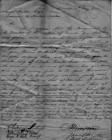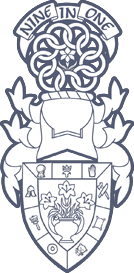MARINERS AND SEAMEN
Few bodies could be more important to a burgh like Dundee the masters and seamen. Dundee, the second wealthiest burgh in Scotland for centuries was little more that a harbour, having nothing such as minerals like coal, iron, water power or anything else to ensure wealth. The harbour, however, was without doubt one of the finest in the land and was easily accessed with shallows where, in earlier days ships could enter for loading and unloading. Dundee also had merchants of great acumen and expertise. Many of these merchants owned the ships and members of the family were masters or supercargo looking after the family business. Typical examples were the Goldman family, one of whom negotiated the free port in Zealand (Camphier) on behalf of the Scots. Details of this are to be found in this web site under the title “Veere”. The Clayhill’s were another family whose business straddled Europe and the Baltic. Best recorded are the Wedderburn’s and from their documents can be seen that they had family members in every port where they did business as well as on board the ships.
The Seamen’s Fraternity does not seem, however, to have received formal recognition till 1556. On 31st August of that year an agreement between sixty and seventy seafaring men of all ranks belonging to Dundee was “Ratifiet, assecurit and approvit’ by the Provost, Bailies and Council, who “in signe and token yairof” affixed to it their ‘secrete sill of caussis’. (2) Such letters or seals of cause might, or might not, be later confirmed by the king. King James V. The main prupose of this, fromm the Seamen’s point of view was that it enabled them to care for their ‘failet and dekayit brethren”. It was therefore agreed that each seaman should contribute, according to his rank, a certain amount of what he received for his outward voyage to a foreign country and another amount, in foreign currency, for the return journey. Ships going to a Scottish port were to contribute eighteen pence for each voyage, unless they brought coal, in which case they were to contribute ‘ane creill full of coillis’
Confirmation came again in 30th June 1608 when the Crown gave permission for Mariners to have their own body “to direct thair commissionairis to convene at ony tyme or place quhair the said burgh of Edinburgh sall appoint and think expedient, and to mak, prescryve, and set doun actis and ordinanceis for advancement of the said trade of navigatioun and for the correcting of the abuseis thairof, and to do all uther thingis that may tend to the advancement of sailing and trafficque in tyme cuming”
The Crown also gave seamen on board merchant ships protection from being pressed” into service, although we do know that there was a pier at Dundee belonging to the crown for that very purpose. However there were many Scottish seamen on board the ships at Trafalgar, not all of them volunteers. HMS Victory had some 42 Scottish Crew Members. The surgeon who treated Nelson was a young Scot, aged 24. There were a total of 18 nationalities among the crew, including Egyptians and Americans. Mary Buick, a Dundee woman married to a seaman from Kinnettles in Fife on the ship prepared Nelson’s body for preserving in the barrel of Brandy prior to his return home. She and her husband are buried in Kilrenny Churchyard, Fife.
On 15th December 1691 we find a Petition by Thomas Wobster, boxmaster to the fraternity of seamen in Dundee, for himself and in name of the fraternity: The Lords by their act dated 4th February 1687 granted warrant to the fraternity “to erect lights and beacons on the river and firth of Tay, empowering them and their boxmasters’ to uplift on account of the lights 12 pennies scots each voyage for each ton in outgoing and incoming for all vessels coming into the firth or river between Fyffeness and the Reidheid inclusive, foreigners paying 2 shillings scots for each ton, to take effect from the previous 27th January, wherupon letters of horning were raised against all masters, merchants and skippers of vessels coming within the firth.” The petitioners have been “at great expenses thir severall years bygone in keeping up such ane advantagious light to there Majestyes haill Ieidges”. Lighting and navigation of river, including bouys, therefore came under the jurisdiction of the Fraternity.
From its introduction, the lifeboat was also the responsibility of the Fraternity in 1830 and remained with them until it was later moved to Broughty Ferry.
As a body the Fraternity began a slow decline from 1862. The Harbours and Passing Tolls Act of 1861 abolished, as from 1st January 1862, all “differential dues”, i.e. dues levied only on foreign ships or on goods carried in them, and, as from 1st January 1872, all dues levied by specified charitable institutions, of which the Fraternity was one, on goods in ships “except so far as the same may be required for the execution of some shipping purpose, as have hitherto been executed by means of the said dues”. By 1872 the Fraternity were not longer responsible for the pilotage of the river and these duties were taken over by the Harbour Trust.
More than the other trade bodies their numbers dwindled until late in the 20th century when two enterprising Masters brought it back to something like its original numbers. It has worked hard recording its history, saving its records, restoring its banner, now re-dedicated and hanging is St Andrews’s Parish Church. The ‘Trades Kirk’ where it can be seen along with many of the trade banners.
The Fraternity is in good health, meets regularly and is again more and more involved in the goings on in the city.
ASSOCIATED DOCUMENTS
 1613 Contract With Campheir
1613 Contract With Campheir
 1689 May 16 Ferry Petition
1689 May 16 Ferry Petition
 1774 Charter Translation
1774 Charter Translation
 1815 Nine Trades Minute
1815 Nine Trades Minute
 1815 Order Of Procession
1815 Order Of Procession
 1841 Electricity From Tay
1841 Electricity From Tay
 1842 Memorandum - Tay Ferries Bill
1842 Memorandum - Tay Ferries Bill

 1868 Franklin Expedition
1868 Franklin Expedition
 1885-1904 Gourlay Ships
1885-1904 Gourlay Ships

 1907 John Waters
1907 John Waters
 1965 Torpedoed February 27
1965 Torpedoed February 27
 2009 WWII Submarine Memorial
2009 WWII Submarine Memorial

 2015 Invitation
2015 Invitation
 Ayrshire Coast
Ayrshire Coast
 Caledon Centenary
Caledon Centenary
 Carrick Coast
Carrick Coast
 Charles I
Charles I
 Charter 1774
Charter 1774
 Charterers Agsinst Ship Owners
Charterers Agsinst Ship Owners
 Colin Gibson
Colin Gibson
 Convervator In Flanders
Convervator In Flanders
 Electricity Generation From Tay
Electricity Generation From Tay
 Extract From City Archives Courtesy Of Iain Flett
Extract From City Archives Courtesy Of Iain Flett
 Extracts Of Records
Extracts Of Records
 Feu Charters
Feu Charters
 History Of Fraternity Sir Francis Mudie
History Of Fraternity Sir Francis Mudie
 Insurance Company Of North America
Insurance Company Of North America
 INVENTORY Of WRITS
INVENTORY Of WRITS
 Letters Ref Reform Bills
Letters Ref Reform Bills
 List Of Charters Etc
List Of Charters Etc
 Loss Of The Vega
Loss Of The Vega
 Maritime Dundee
Maritime Dundee
 Naval Aspects
Naval Aspects
 Petition Re Reform (undated)
Petition Re Reform (undated)
 Privie Council
Privie Council

 Register Of Shipping The Charles Barrie
Register Of Shipping The Charles Barrie
 Register Of Deeds
Register Of Deeds
 Remembrance Poem
Remembrance Poem
 Riga Trading
Riga Trading
 Roup Of Whales
Roup Of Whales
 Royal Charter
Royal Charter
 San Francisco USA And Houghly River India
San Francisco USA And Houghly River India
 Shipping
Shipping
 Sir William Garthwaite Bt.
Sir William Garthwaite Bt.
 The Adriatic Plan
The Adriatic Plan
 The Lady Franklin
The Lady Franklin
 The Sloop Lady Kinnaird Of Dundee
The Sloop Lady Kinnaird Of Dundee
 The UNICORN Of Dundee
The UNICORN Of Dundee
 Whale Boats
Whale Boats
 1600-1825 Mariners
1600-1825 Mariners Abertay
Abertay Accounts
Accounts Accounts Book 1652 - 1696
Accounts Book 1652 - 1696 Acts Of Parliament Etc
Acts Of Parliament Etc Arcict Convoys
Arcict Convoys Artefacts
Artefacts Barry Links
Barry Links Barry Links Thorntons
Barry Links Thorntons Dundee Shipbuilding Co
Dundee Shipbuilding Co Harbour
Harbour Historic Extracts
Historic Extracts Inuits
Inuits James Adie Tait
James Adie Tait John Watson
John Watson Lawhill
Lawhill Lights And Navigation
Lights And Navigation Maps
Maps Masters Etc
Masters Etc Membership
Membership Minutes
Minutes Name Change
Name Change Pictures Ship Models
Pictures Ship Models Reform
Reform Riga
Riga Shipwrecks
Shipwrecks St Abb's
St Abb's Tayport Lights
Tayport Lights The Mary Ann
The Mary Ann Thomas Neish
Thomas Neish Trinity House
Trinity House V A Cappon Tugs
V A Cappon Tugs Various
Various Whaling
Whaling William Kidd
William Kidd Witch Burning
Witch Burning


